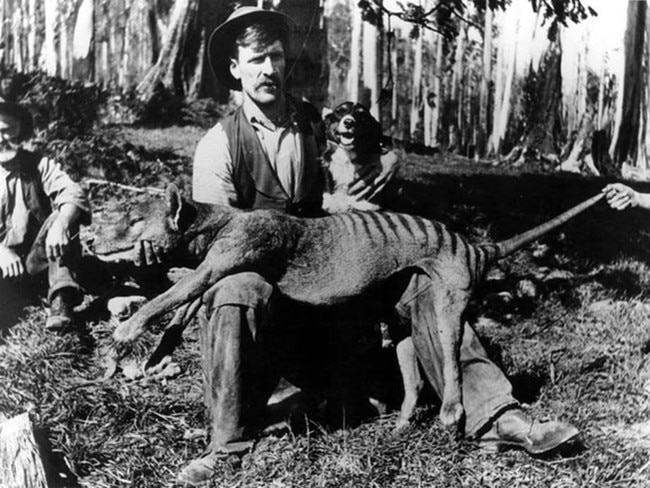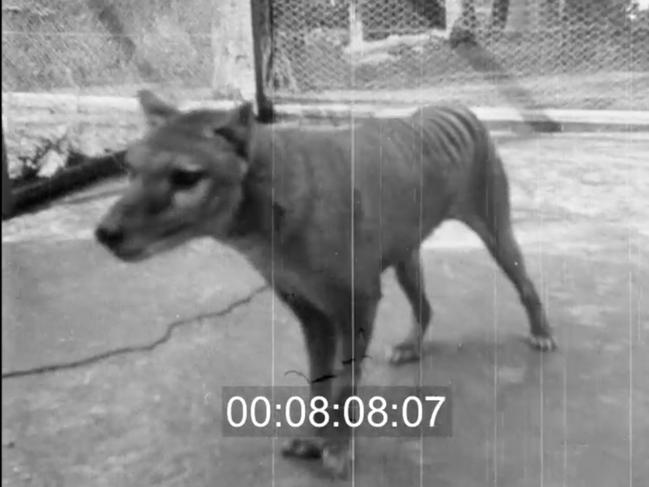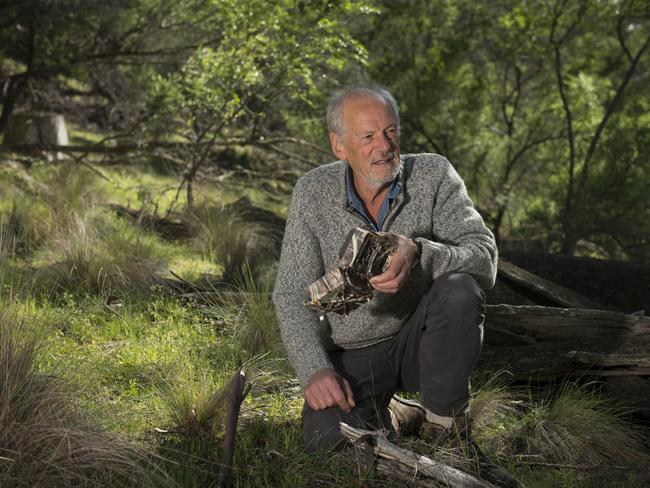Thylacine: CSIRO book details how internet gave mammal second life
A new book on the thylacine delves into everything from de-extinction efforts to the internet’s role in increasing the cultural profile of the species – and spreading misinformation about it.

Tasmania
Don't miss out on the headlines from Tasmania. Followed categories will be added to My News.
A newly published book has provided fresh perspectives on the thylacine, delving into everything from de-extinction efforts to the role of the internet in boosting the cultural profile of the extinct species.
Thylacine: The History, Ecology and Loss of the Tasmanian Tiger, published by CSIRO, features the work of 78 contributors and is purported to be the first major summary of the available evidence relating to the carnivorous marsupial in 20 years.
It covers topics including the enigmatic animal’s ecology, evolution, encounters with humans, persecution, believed extinction and even its appearances in works of fiction.

The book’s final chapters explore the possible future of the thylacine, as scientists plot a multimillion-dollar resurrection of the species.
Gareth Linnard, who edited the collection, said there had been two “significant” changes in the field of thylacine research since the last summary of the evidence was released.
“Firstly, much of what was believed to be correct then has been challenged or overturned by further study, and multiple studies have covered a lot of new ground,” Mr Linnard, a researcher who specialises in the historical trade of thylacines during the 1920s and ‘30s, said.
“Secondly, the species’ cultural profile has expanded. In a large part this is due to the proliferation of the internet.
“This can be a very good thing and has led to multiple advances in our understanding, but also it can and does lead to people with no knowledge of the species disseminating misinformation. This book attempts to address that.”
Wildlife biologist, Nick Mooney, who was once responsible for investigating reports of thylacine sightings for the Tasmanian Parks and Wildlife Service, is among the contributors to the book.

“It was a very important animal in Tasmania’s ecology and we exterminated it through farmer greed via wild exaggeration and demonisation,” he said.
“The lesson is that this ruthlessness is happening with wolves, lynxes and all manner of predators around the world, even in rich countries like Sweden and Australia.
“Dingoes, now known to be very important ecologically, are ruthlessly hunted across vast areas and we have periodic bouts of eagle massacres by stock farmers.
“This lingering predator hysteria will be the major block to rewilding with a thylacine-like animal, should the boffins manage to invent one.”
Thylacine: The History, Ecology and Loss of the Tasmanian Tiger is available now (RRP $59.99).





